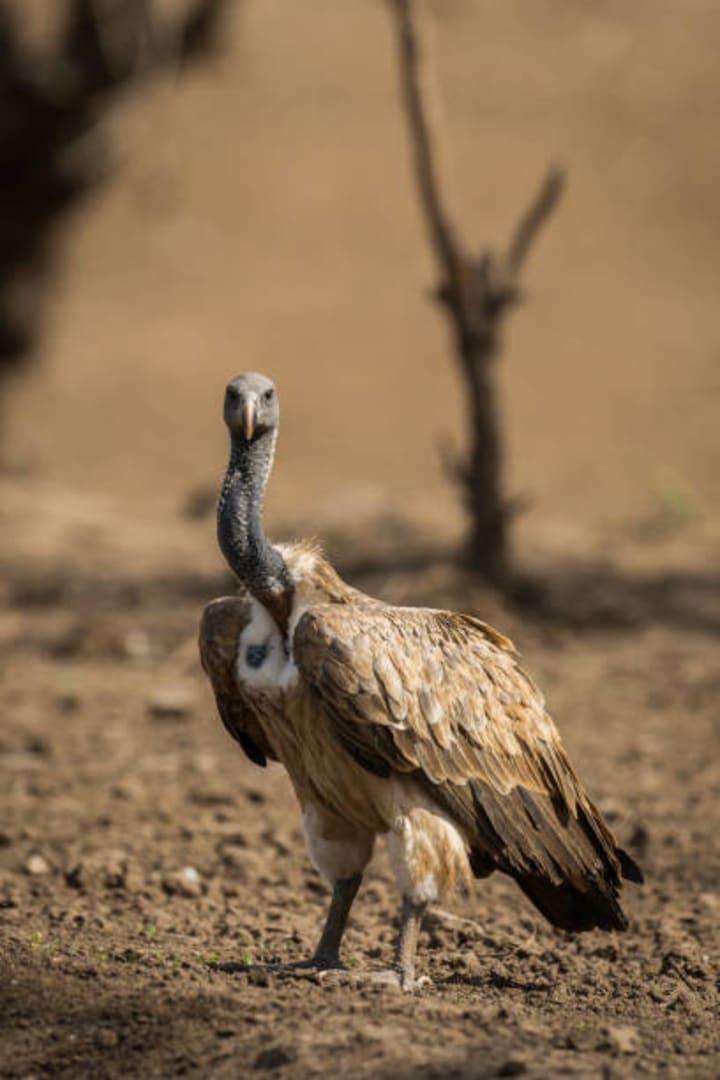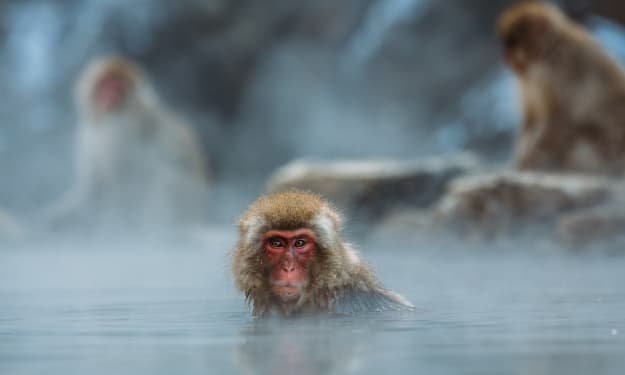"The Plight of the Indian Vulture: Threats, Conservation Efforts, and the Future of a Vital Species"
"Examining the Key Threats Facing Indian Vultures and the Conservation Strategies Aimed at Ensuring Their Survival in the Wild"

The Indian vulture, also known as the white-rumped vulture, is a critically endangered bird of prey that is native to the Indian subcontinent. These large, scavenging birds were once a common sight in the skies above India, but their populations have been devastated in recent decades due to a number of factors, including poisoning, habitat loss, and the use of diclofenac, a veterinary drug that is toxic to vultures.
In this article, we will take a closer look at the Indian vulture, its role in the ecosystem, the threats it faces, and the efforts being made to conserve this species.
Physical Characteristics:

The Indian vulture is a large bird of prey, measuring between 80 and 115 centimeters in length, with a wingspan of up to 2.6 meters. They have a white or cream-colored body, with a dark gray head, neck, and wings. As their name suggests, they have a distinctive white rump, which is visible in flight. They have a strong, hooked beak that is adapted for tearing flesh, and sharp talons for grasping their prey.
Distribution and Habitat:

The Indian vulture is found throughout the Indian subcontinent, including India, Nepal, and Pakistan. Historically, they were found in a wide range of habitats, including forests, grasslands, and wetlands. but today they are most commonly found near human settlements, where they feed on the carcasses of livestock.
Diet and Behavior:

Indian vultures are scavengers, feeding almost exclusively on the carcasses of dead animals. They are particularly well adapted to this niche, with strong beaks and necks that allow them to tear through tough animal hides, and a digestive system that is able to process bacteria and other toxins that are present in decaying flesh.
In the wild, Indian vultures are social birds, often feeding in large flocks on a single carcass. They are known for their distinctive
soaring flight, with wings held in a shallow "V" shape. They are able to fly for long periods of time without flapping their wings, using thermals and updrafts to gain altitude and cover large distances.
Role in the Ecosystem:

As scavengers, Indian vultures play a critical role in the ecosystem, helping to prevent the spread of disease by removing dead animals from the environment. Without vultures to clean up carcasses, the population of feral dogs and other scavengers can increase, leading to an increased risk of disease transmission.
Threats to the Indian Vulture:

The Indian vulture is facing a number of threats that have led to a catastrophic decline in its population. One of the primary threats is the use of diclofenac, a veterinary drug that is used to treat livestock. When vultures feed on the carcasses of animals that have been treated with diclofenac, it causes kidney failure and death in the birds. The use of diclofenac has been banned in India, Nepal, and Pakistan, but its use continues in some areas, and it is still available in neighboring countries.
Another threat to Indian vultures is habitat loss. As more and more land is converted for agriculture and human settlements, the amount of suitable habitat for vultures is shrinking. This, in turn, has led to increased competition for food, as vultures are forced to feed on smaller and more contaminated carcasses.
Poisoning is also a major threat to Indian vultures. In many parts of India, farmers use poison to kill feral dogs and other animals that prey on livestock. However, vultures that feed on
These carcasses are also exposed to the poison, leading to widespread mortality. Finally, Indian vultures are also hunted for their body parts, which are used in traditional medicine and other cultural practices.
Conservation Efforts:

In response to the decline in Indian vulture populations, a number of conservation organizations and government agencies have launched efforts to protect and conserve this species. One of the key efforts has been the development of captive breeding programs, in which Indian vultures are bred in captivity and released into the wild to supplement wild populations. These programs have been successful in increasing the number of Indian vultures in some areas. but they face challenges, including limited funding and
difficulty in identifying suitable release sites.
Another key conservation effort has been the establishment of vulture safe zones, where the use of diclofenac and other harmful pesticides is banned, and where carcasses are managed in a way that minimizes exposure to toxins. These safe zones have been established in India, Nepal, and Pakistan, and have been successful in increasing vulture populations in some areas.
Other efforts to protect Indian vultures include raising awareness among farmers and the general public about the importance of vultures and the threats they face, and working with local communities to develop sustainable agricultural practices that are less harmful to vultures and other wildlife.
Conclusion:

The Indian vulture is a critical component of the Indian ecosystem, playing a vital role in the removal of dead animals and the prevention of disease. However, the species is facing a number of threats, including the use of diclofenac, habitat loss, poisoning, and hunting. Conservation efforts, including captive breeding programs and vulture safe zones, are underway to protect and conserve this species. However, much more needs to be done to ensure the long-term survival of the Indian vulture and other threatened wildlife in the region.
About the Creator
Enjoyed the story? Support the Creator.
Subscribe for free to receive all their stories in your feed. You could also pledge your support or give them a one-off tip, letting them know you appreciate their work.






Comments
There are no comments for this story
Be the first to respond and start the conversation.